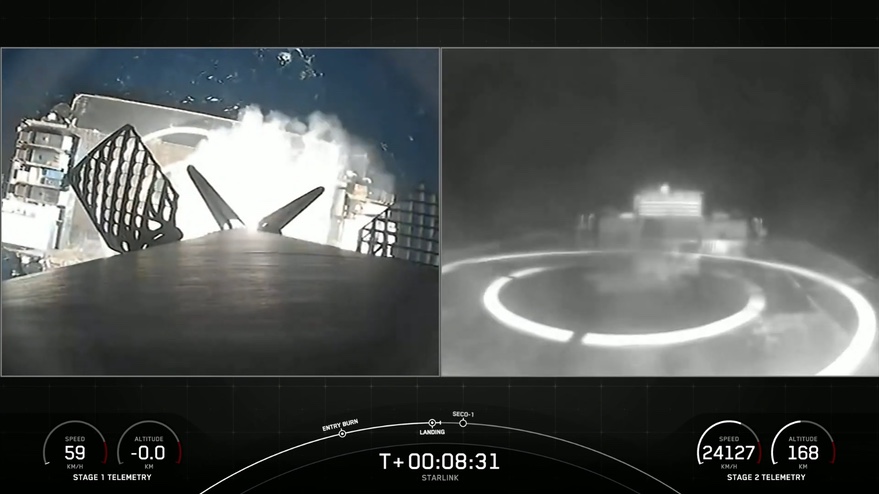WASHINGTON — SpaceX launched a set of Starlink satellites May 9 on a Falcon 9 whose first stage was making its tenth flight, a long-awaited goal in the company’s reusability efforts.
The Falcon 9 lifted off from Space Launch Complex 40 at Cape Canaveral Space Force Station at 2:42 a.m. Eastern. The rocket’s upper stage deployed its payload of 60 Starlink satellites into low Earth orbit nearly 65 minutes later.
The launch, the third in less than two weeks for SpaceX, brings the total number of Starlink satellites in orbit to more than 1,550. The company is gradually expanding its beta test program for the broadband internet service as the constellation grows. SpaceX noted on the launch webcast that it opened up that beta test program in the last week to people in Austria and France.
The launch itself was noteworthy as it marked the first time a Falcon 9 first stage had flown 10 times. The booster first launched the Demo-1 commercial crew test flight in March 2019. It later launched the Radarsat Constellation Mission, the SXM-7 satellite for SiriusXM and six Starlink missions, most recently March 14, before this launch.
SpaceX had long identified 10 flights as a goal for Falcon 9 reuse in order to justify the significant investment the company made into reusability. In recent months, though, company executives have suggested that the booster can fly more than 10 times.
“There doesn’t seem to be any obvious limit to the reusability of the vehicle,” Elon Musk, chief executive of SpaceX, said at an April 23 NASA press conference after the Crew-2 launch.
The company has been using its own Starlink missions to push the boundaries of booster reuse. That has uncovered issues, such as a February launch where the Starlink payload reached orbit but the booster failed to land. That booster was making its sixth flight, but some engine components, such as “boots” or covers around the engines, were life leaders. One of those covers had a hole that allowed hot gas from the engine exhaust get into other parts of the engine, triggering a shutdown that prevented the stage from landing.
“We do intend to fly the Falcon 9 booster until we see some kind of a failure with the Starlink missions, have that be a life-leader,” Musk said at the briefing, noting at the time that a tenth flight of a booster was upcoming. “We’re learning a lot of about reusability. It’s a hard problem for rockets.”
SpaceX has not disclosed whether it will attempt to use this booster for an eleventh launch, but the successful landing at least preserves that possibility. “This booster gets to live again,” Michael Andrews, the host of the SpaceX launch webcast, said shortly after the landing.
